I had been thinking about writing something entirely different for this week’s newsletter, and then yesterday morning I had a failure in the kitchen and I thought it might be helpful to write about that, instead. Although it’s easy to believe from photos on Instagram that everything anyone cooks is perfect all the time, the reality can be quite different. It is a cliché, I know, but you really can learn a lot from getting something wrong.
True, those of us with a lot of culinary experience likely have fewer unsalvageable disasters than others. I’ve been active in the kitchen, paying attention to what others cook and write and learn about food, for more than 50 years now. I’ve picked up some things. Even if an experiment doesn’t go according to plan, I enjoy figuring out what I can do to fix or repurpose the results. Still, occasionally it happens—you make something inedible and it goes in the trash.
One of those things was a sourdough election cake I made one Tuesday in November of 2016, from an old American recipe I unearthed while doing some research on the genre. After working for a couple of days on the starter and the cake, which was really more like a sweet bread, I began slicing it to serve to the friends who had gathered at our Manhattan apartment to watch Hilary Clinton become the first woman president of the United States. I happened to break off a little piece of cake to taste as I lay the first slice on the serving platter. Good thing I did. The cake was disgusting. Overly yeasty, salty, crumbly, dense. I deemed it inedible and slid the whole thing into the garbage before anyone knew it existed. And…well…we know how that night played out. Turns out my election cake was more accurate than the polls that year.
Eight years later, Trump is preparing to return to office. No cake could see that coming. And perhaps fitting for the disaffection felt in the country, yesterday my failure wasn’t a total disaster, just a lingering disappointment.
Come On, Try It. Everyone Is Doing It!
I’ve made many a pâté before, usually around the holidays, but always de campagne, that is, rustic, country, never dressed up en croûte.
As if to taunt me to strive higher, for weeks, maybe months now my Instagram has been full of images and Reels of French charcutiers slicing into gorgeous pâtés-croûte. Maybe it’s the time of year. Maybe it’s something I Googled while watching contestants make sausage rolls and meat pies on the Great British Bake Off. I don’t know what the algorithm adjustment is that brought these fancy French meatloaves into my feed, but there they are. And boy are they impressive, especially those by the famed Parisian Maison Vérot (above), and also, to my surprise, by the kosher Maison Berdah (below).
My interest in these crusted creations isn’t totally new. A few years back during Covid lockdown I was duly impressed by the statuesque slabs of pâté-croûte my friend Laurent Gras would deliver from his experiments in the form. And then last year I followed along with anticipation as my friend and fellow Substacker Tse Wei Lim set out to compete in the Championnat du Monde du pâté-croûte, a journey he chronicled in his Let Them Eat Cake newsletter.
I decided to give it a try.
Meatloaf by Another Name
Although pâté sounds complicated, fundamentally it’s just a meatloaf. Easy-peasy if you purchase the meats—in this case veal and pork—already ground. You mix everything together, let it sit so the flavors meld, and bake it until done. Adding a crust does make it more challenging because you need to get the texture spot on and the timing just right so that everything finishes together. The crust doesn’t have to be much more elaborate than a pie, and is, in fact, less delicate to handle. With egg wash as both glaze and glue, it comes together rather easily. I was a little nervous about the last step of filling the gaps between the cooked meat and crust with aspic. But I just happened to have some pork aspic in the freezer from my forays into xiao long bao, Shanghai soup dumplings, a while back. Like the aspic, I was all set.
I’ll remind you that our range is still not working and that I am doing all of my baking in our glorified toaster oven. (See Issue #184). This required me to pass on my pâté mold, which is too big for the Breville, and opt for the cocktail loaf pan I know fits instead. It’s here that the seed of my tragedy was planted. Because I was using the loaf pan instead of a pâté mold, whose perforated sides assure a crisp crust and can be dislodged for easy removal, I was worried about getting the whole thing out of the mold in one piece once it was chilled and the fat congealed. Accordingly, I lined the mold with a wide strip of parchment to help lift it out and I rolled the dough slightly thinner than I might have otherwise in order to ensure it baked through.
Without any intricate layering, the assembly was pretty quick. I packed it down to remove any air bubbles, cut three chimneys in the top to allow steam to escape, and decorated it with pastry leaves and berries. Voilà! a beauty, if I do say so myself. A generous brushing of egg wash to ensure deep browning and the sealing of any hairline cracks and the whole thing was in the Breville before 7:30 am.
Oops. The generous edge of the crust I crimped meant that the pâté didn’t quite fit on the diagonal of the toaster oven, the corners smashed up against the walls of the appliance. To make sure the heat could nevertheless circulate around the pan, I turned on the convection fan. An hour and twenty minutes later, the place smelled amazing, the crust was nicely browned, and the center of the pâté registered 153°F on an instant-read thermometer. I removed it to cool. Meanwhile, I warmed the aspic, ready to pour it through one of the chimneys.
Alas, I had a second thought that would prove tragic. What if the parchment wasn’t enough to dislodget the loaf? I decided that if I unmolded the pâté while still warm, I might avoid the coagulation of fat that would cause it to stick. I gave it another 30 minutes in our cold room before I decided to invert it onto a cutting board.
Of course, it wasn’t only the fat from the filling that would still be liquid while warm. The dough for the crust was 50% butter, delicate and flaky. I turned the whole thing upside down, tugging on the parchment overhang, and as I should have known and only realized a moment too late, the crust just shattered and fell off in giant pieces while the naked, steaming meatloaf lay along my forearm. What an idiot. I set the now naked filling down on the baking tray. I gathered the shards of crust. I sheepishly returned the aspic to the freezer. No need to fill any holes, except the one in my heart, as the rendered foie gras fat dripped onto the floor.
Because of the cost of the ingredients and the amazing smell of everything, I saved it all. The pieces of crust were indeed light and flaky, perfumed by the savory meats they once held. (Milo approves.) The filling emerged naked, like a pâté de campagne, with whose familiar, unpretentious embrace I should have been satisfied.
Last night for dinner I had a beautiful couple of slices of pâte, the croûte on the side, or à côté, along with my homemade mustard and cornichons.
I realize I have likely not convinced you to give making a pâté a try. But I encourage you to skip the ambition of the crust and make a simple country pâté, which is easy and delicious and rewarding. I’ve learned a lot about handling dough, not second guessing myself, the power of patience. The recipe that follows is for the filling of my fiasco. Wrap it in pastry at your own risk. I will try again, once the sting of failure recedes and the last crumbs of this attempt are gone.
RECIPE: Pâté de Campagne
Makes 1 standard pâté mold or loaf
3/4 pound ground veal
3/4 pound ground pork
1 large or 2 small chicken liver(s), veins, nerves, and bile sack removed, minced to a paste
1 large egg
2 tablespoons Cognac
2 tablespoons Madeira or Port
1 tablespoon fine sea salt
1/2 teaspoon freshly ground black pepper
1/2 teaspoon freshly ground white pepper
1/4 teaspoon freshly ground nutmeg
1/4 teaspoon ground ginger
1/4 teaspoon ground cloves
3 tablespoons crème fraîche or heavy cream
1 magret de canard or duck breast (about 14 ounces), skin and fat removed, cut into cubes
4 ounces fresh foie gras or 2 ounces foie gras butter or truffle butter, cut into small dice (optional)
About ½ cup shelled, roasted pistachios
In a large bowl, combine the ground veal, gound pork, minced chicken liver, egg, cognac, madeira, salt, and spices, and blend well with a wooden spoon. Blend in the crème fraîche. Stir in the cubed duck, foie gras, and pistachios until evenly distributed. Cover and refrigerate overnight.
Preheat the oven to 350°F. Grease a 3-cup terrine or loaf pan with pan spray. Firmly pack the mold with the filling, you don’t want any air bubbles, and shape the top into a nice, even mound. Set in the preheated oven and bake for 55 minutes or so, until the top is nicely browned and an instant-read thermometer inserted in the center registers at least 150°F. Remove from the oven and cool on the rack. You can press the pâté with a weight as it chills to compact the filling as traditionally recommended, but I find this combination doesn’t require it. Slice and serve directly from the pan, or set the pan in hot water for a moment and unmold onto a cutting board. Serve with Dijon mustard and cornichons.




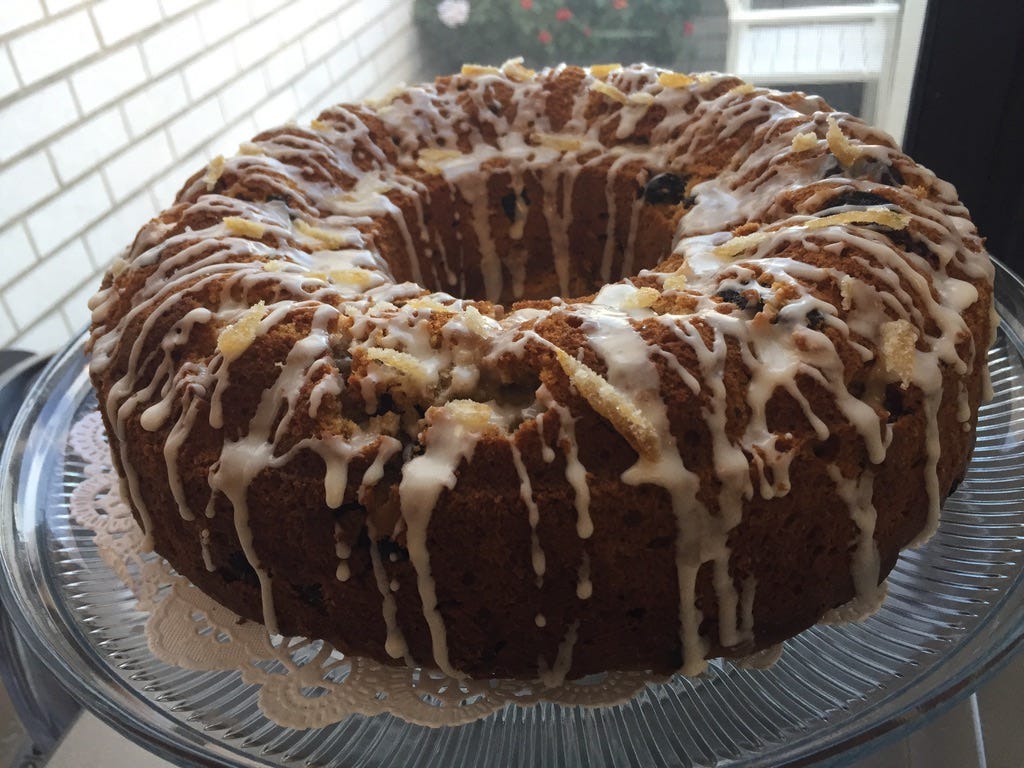
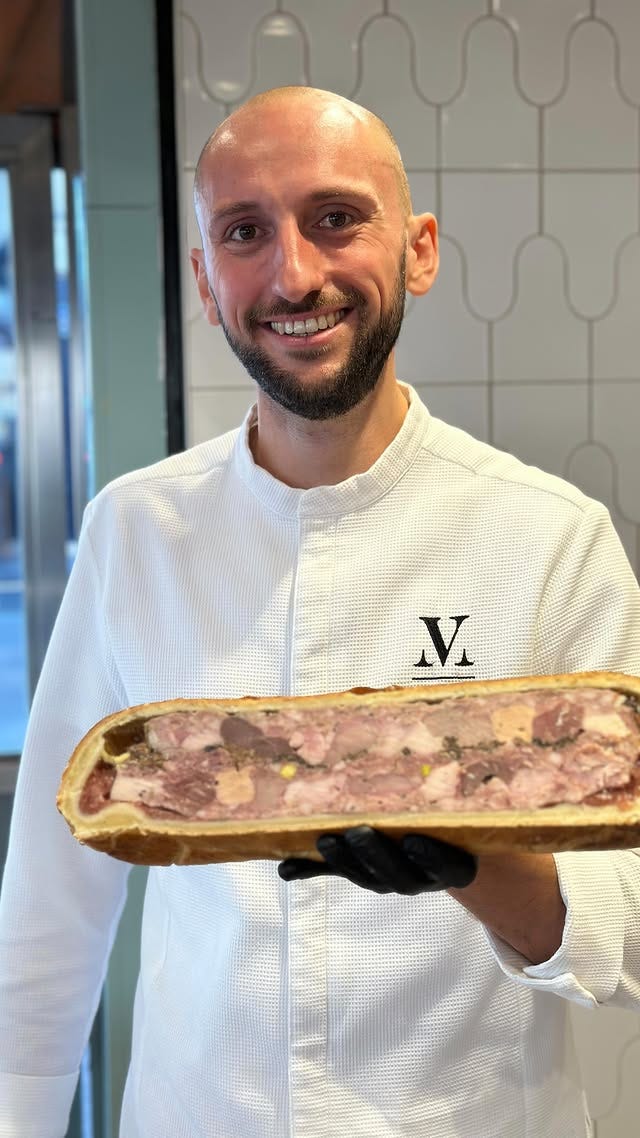
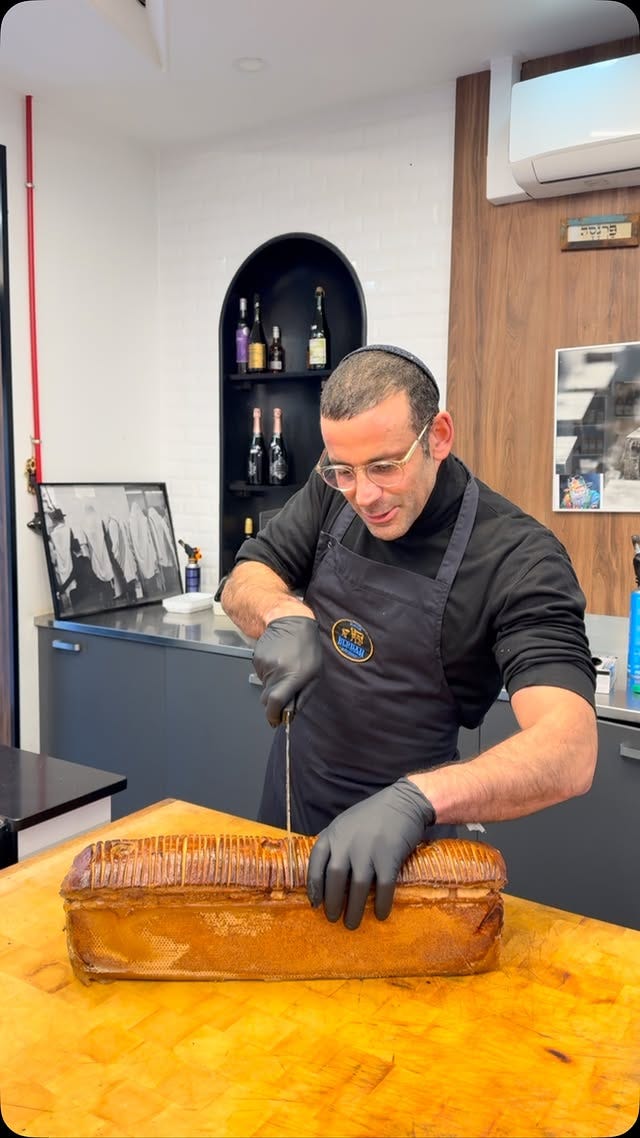



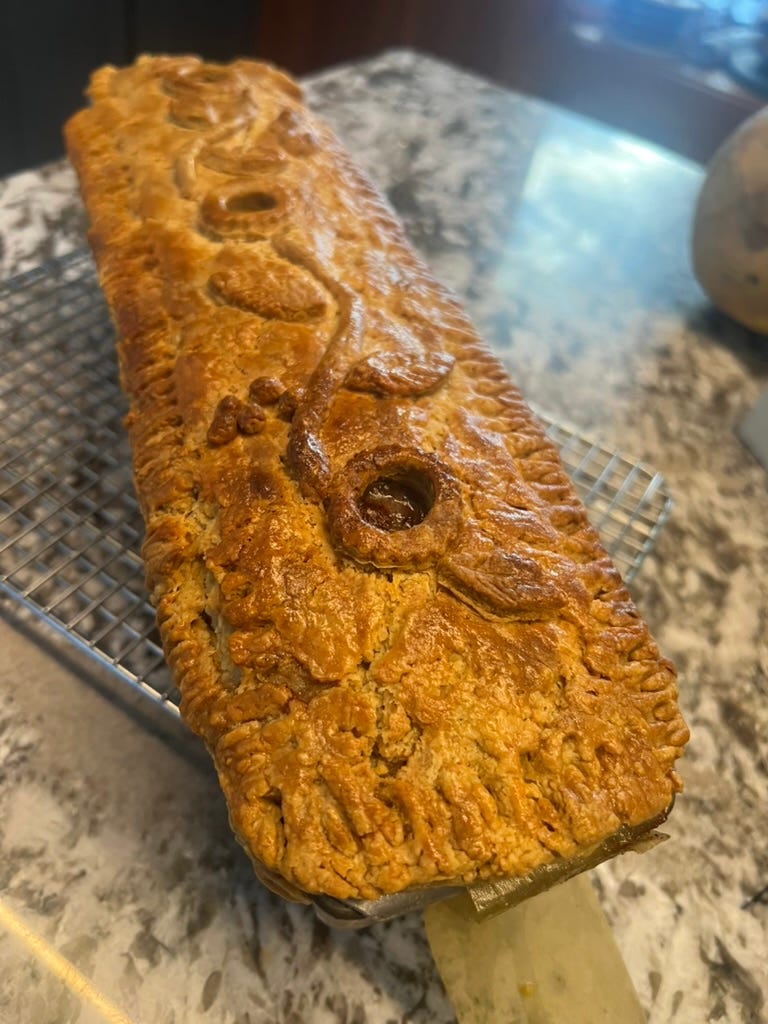
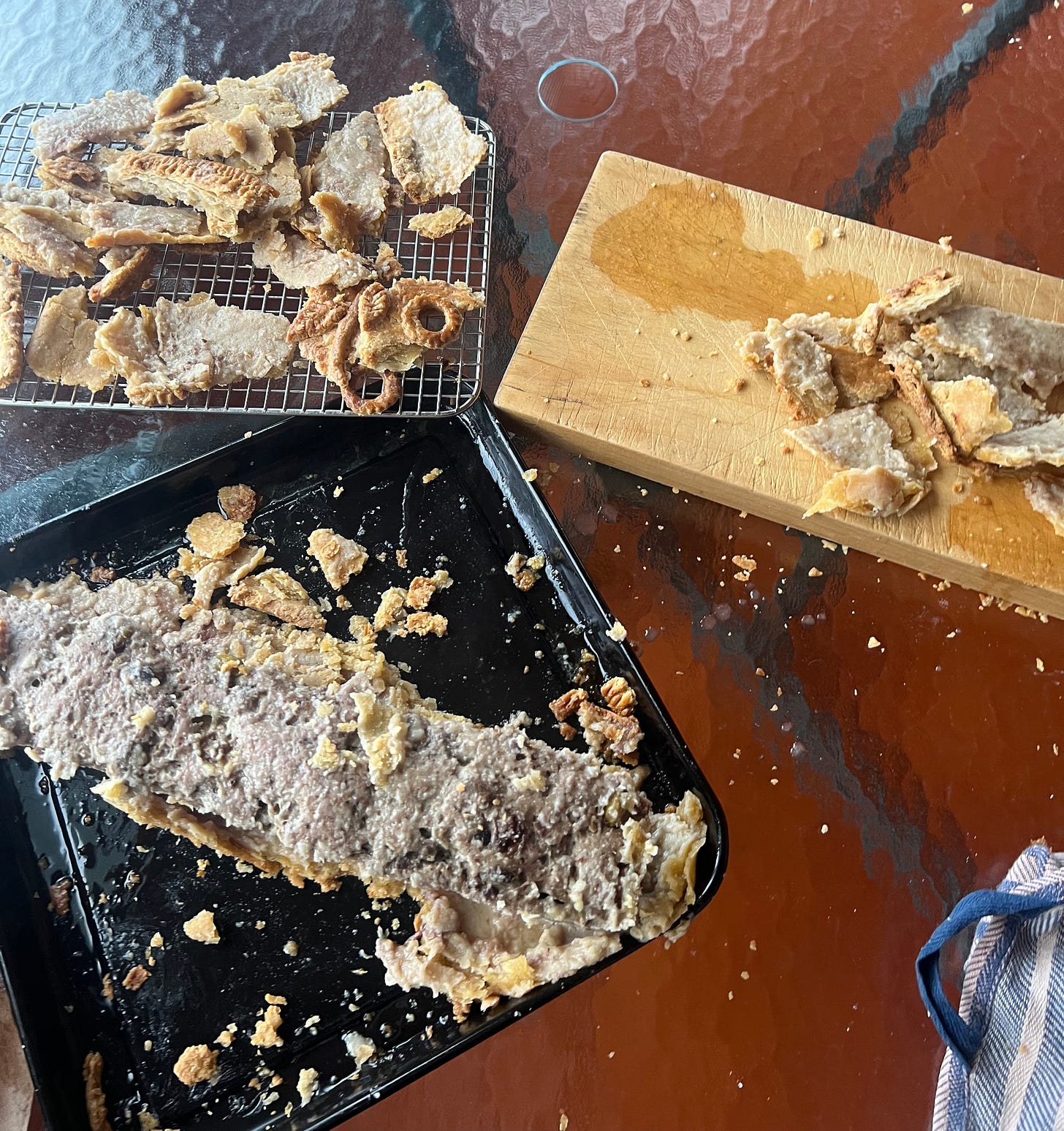
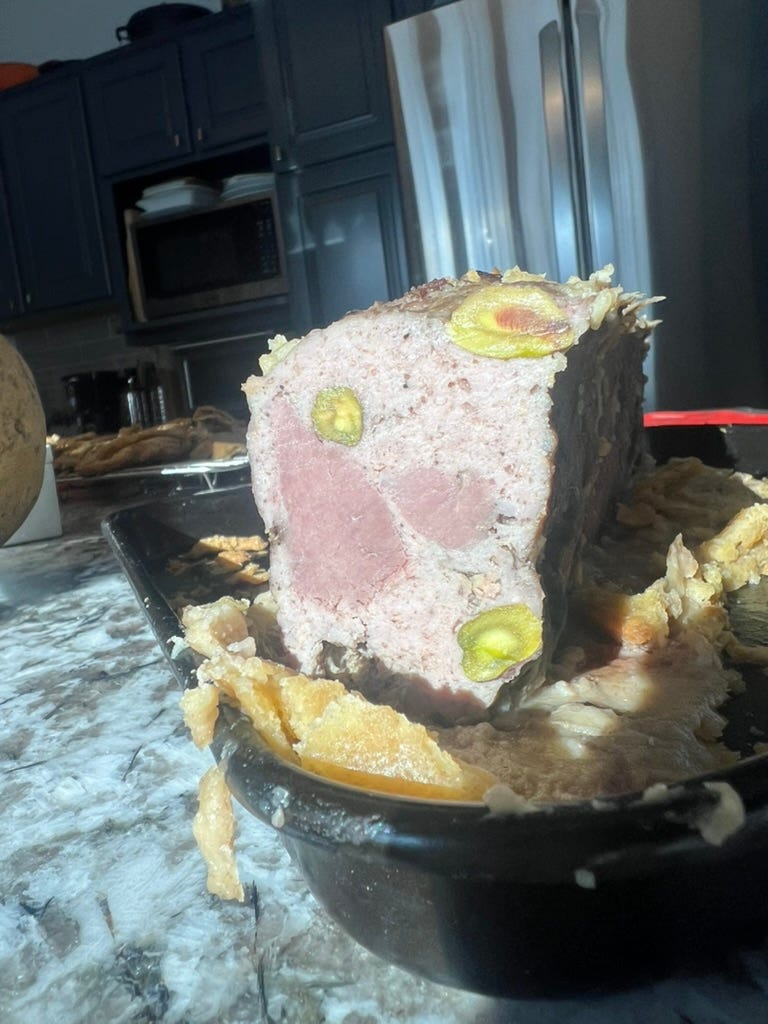
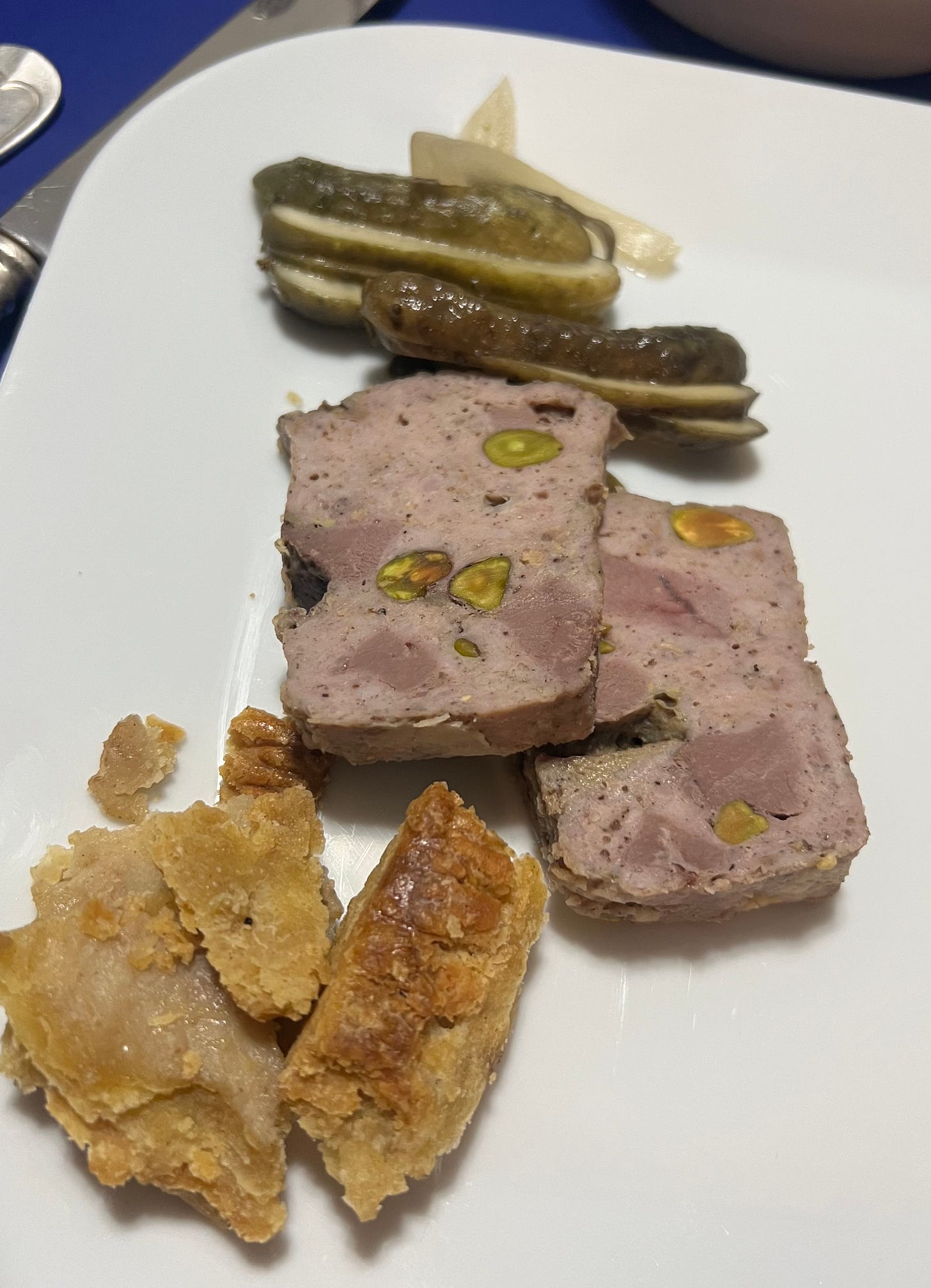
Years ago, when I was producing popups, I did an entire menu out of Mastering the Art of French Cooking. Our main that night was Filet of Boeuf Braise Prince Albert or Beef stuffed with foie and truffles. I pulled the beef from the oven during service but neglected to account for cooling time which would have allowed the molten foie to congeal somewhat. Instead, I cut it open and it all poured out looking vaguely like cat sick. We improvised as best we could but it was a lost cause. We got a lot plates returned almost untouched that night.